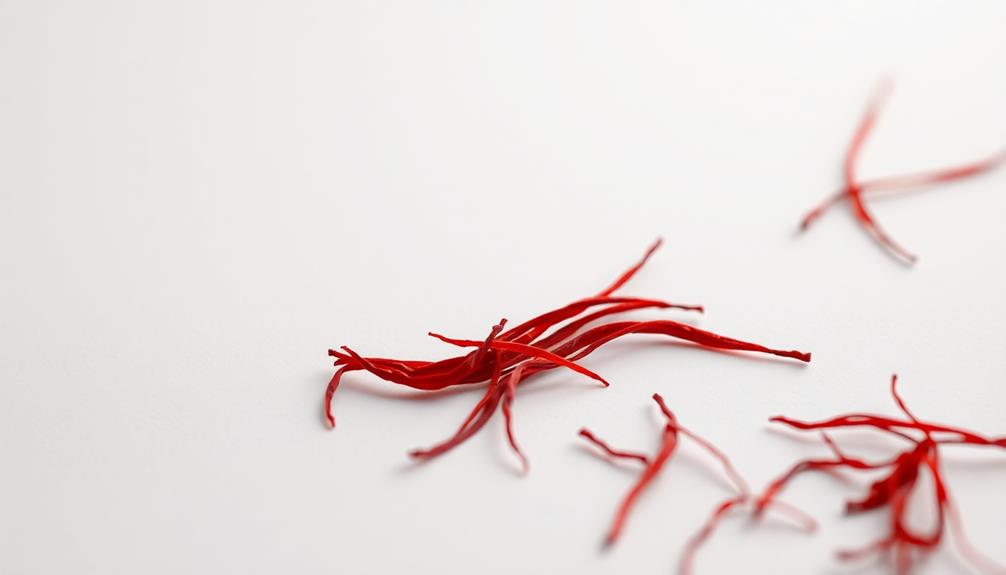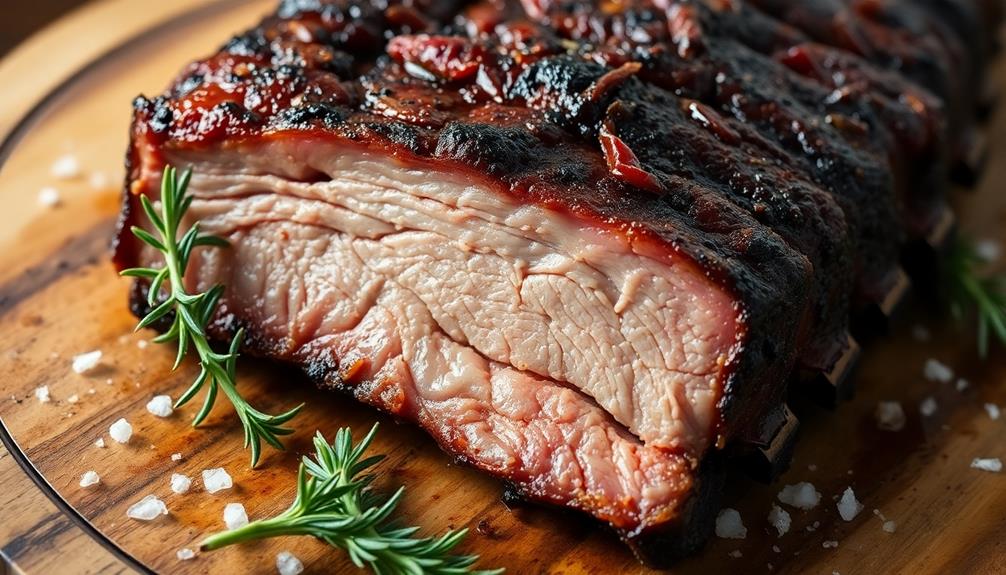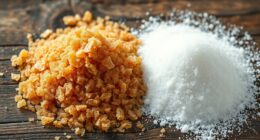Truffles, the coveted "black diamonds" of cuisine, have captivated gourmands for millennia. Sourced through careful hunting with trained companions, these earthy, decadent ingredients elevate simple dishes into culinary treasures. Delicately shave truffle slices over pasta, infuse them into velvety soups, or whisk them into scrambled eggs for a luxurious breakfast. Savor their pungent aroma and rich, complex flavors that have inspired chefs and food enthusiasts alike. Truffles' storied history and cultural significance extend far beyond their rarity and price – they represent gastronomy's deep connection to nature's gifts.
Key Takeaways
The key points are:
- Truffles, highly valued for their unique aroma and rich flavor, have been a culinary treasure since ancient times.
- Truffle hunting involves trained dogs or pigs to locate the underground fungi, requiring knowledge of growing conditions and ethical practices.
- Truffles enhance the taste profile of various dishes, including pasta, soups, and scrambled eggs, and are considered "black diamonds" due to their rarity.
- Cooking with truffles requires careful handling, such as slicing them thinly and adding them just before serving to preserve their flavor.
- The appreciation of truffles reflects the hard work of foragers and producers, and their cultural significance in regions known for truffle hunting.
History
The history of truffles dates back centuries, with the aromatic fungi being prized by ancient civilizations. Records show that the ancient Greeks and Romans recognized the value of truffles, using them in their cuisine and even believing they'd aphrodisiac properties.
During the Middle Ages, truffles became a delicacy among the European elite, with French and Italian regions becoming renowned for their production.
In the 19th century, the cultivation of truffles was pioneered, allowing for a more consistent and reliable supply. This helped to popularize truffles, making them more accessible to the masses.
Today, truffles remain a highly sought-after ingredient, with chefs and food enthusiasts around the world competing to source the best specimens. From their ancient origins to their modern-day status as a culinary treasure, the history of truffles is a testament to the enduring appeal of this remarkable ingredient.
Recipe
Truffles are a prized ingredient in many cuisines, known for their earthy, umami-rich flavor. Cooking with truffles can elevate even the simplest dish into something truly extraordinary. This recipe showcases the best way to enjoy the delicate, aromatic nature of these underground fungi.
Truffles are incredibly versatile and can be incorporated into a variety of dishes, from pasta to eggs to risotto. The key is to use them judiciously, as their flavor can be overpowering if used excessively. In this recipe, we'll highlight the truffle's natural splendor by pairing it with a simple, but elegant dish.
- 1 ounce fresh black truffle, finely shaved or grated
- 4 eggs
- 2 tablespoons unsalted butter
- 2 tablespoons heavy cream
- Salt and freshly ground black pepper to taste
In a small saucepan, whisk together the eggs, cream, and a pinch of salt. Place the pan over low heat and cook, stirring constantly, until the eggs are softly scrambled, about 2-3 minutes. Remove from heat and stir in the butter until melted and incorporated.
Serve the scrambled eggs immediately, topped with the shaved or grated truffles. The heat from the eggs will release the truffle's aroma, allowing you to fully experience its unique flavor. Enjoy this dish with a slice of crusty bread for a luxurious start to your day.
When cooking with truffles, remember that a little goes a long way, so use them sparingly to allow their essence to shine.
Cooking Steps
First, use your nose to locate the truffles buried beneath the soil.
Carefully dig them up, being mindful not to damage them.
Slice the truffles into thin pieces and add the shavings to your dish, then serve it immediately with fresh bread.
Step 1. Locate Truffles by Scent
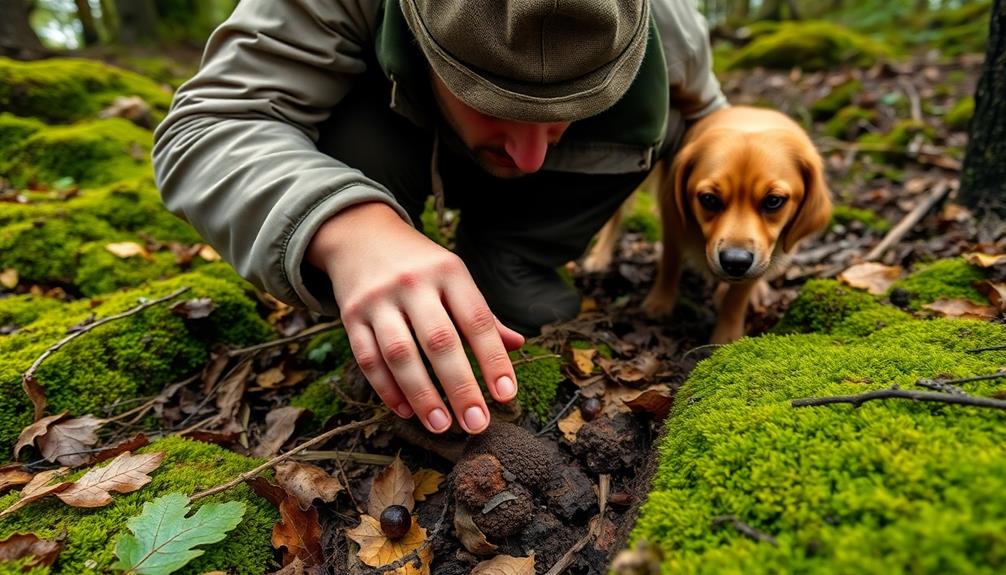
To locate truffles, you'll rely heavily on their pungent aroma. Truffles emit a distinct, earthy scent that can be detected from several feet away.
You'll need to train your nose to pick up on this unique fragrance, which is often described as a mix of mushrooms, garlic, and dark chocolate.
Once you've identified a promising scent, you'll need to zero in on the exact location. Slowly move in the direction of the smell, keeping your head lowered and nose close to the ground.
As you get closer, the scent will intensify. When it's at its strongest, that's your cue to start digging. Use a small trowel or your hands to carefully unearth the treasure.
With patience and practice, you'll be able to pinpoint the precise spot where the truffles are hiding, just beneath the soil's surface.
Step 2. Dig up Truffles Carefully

With the truffle located, it's time to carefully unearth it. Use a small trowel or spoon to gently dig around the base of the truffle. Be cautious not to damage the truffle or its fragile root system.
Slowly work the soil away, revealing the black, knobbly fungus. Once exposed, carefully lift the truffle, avoiding any unnecessary handling. Shake off any excess dirt, but don't wash the truffle, as this can diminish its aroma and flavor.
Now that you've harvested the precious truffle, it's crucial to handle it with care. Wrap the truffle in a paper towel or clean cloth and store it in an airtight container in the refrigerator.
Use the truffle as soon as possible, as its flavor and aroma will start to fade over time. When ready to use, brush off any remaining dirt with a soft brush or cloth. Truffles are now ready to be sliced, shaved, or grated and added to your culinary creations.
Step 3. Slice Truffles Into Thin Pieces
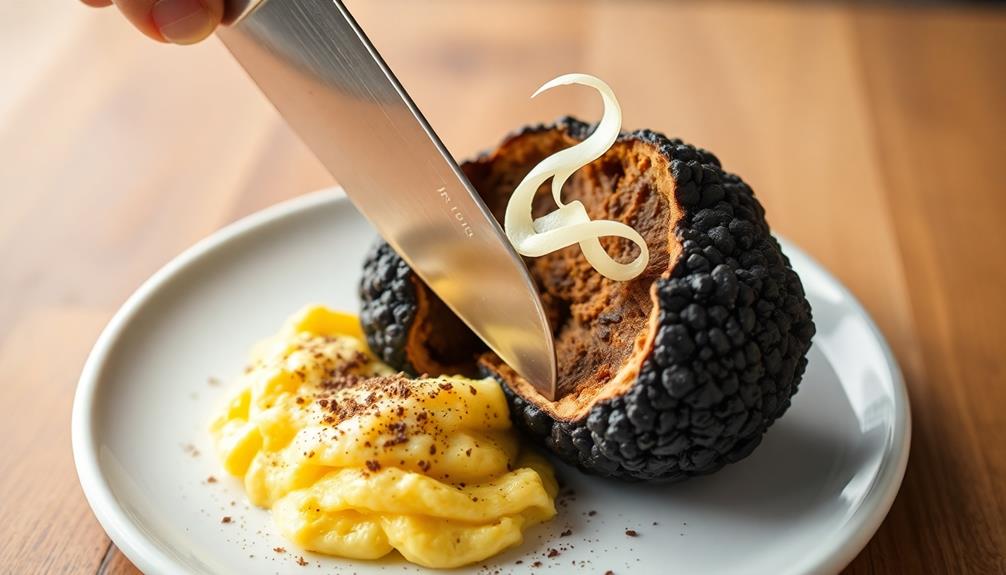
When slicing truffles, use a sharp knife or truffle slicer to create thin, delicate pieces. This allows the rich, earthy aroma and flavor of the truffles to be fully experienced.
Apply gentle pressure as you glide the blade across the surface, ensuring each slice is uniform in thickness. Avoid hacking or sawing, as this can bruise the delicate fungus and diminish its taste.
Place the sliced truffles on a clean surface, taking care not to overcrowd them. This prevents the pieces from sticking together and preserves their distinct texture.
Truffles are best enjoyed when thinly sliced and lightly seasoned, allowing their complex flavors to shine. Sprinkle the slices over dishes just before serving, or incorporate them into sauces, risottos, or omelets.
The thin slices melt into the dish, infusing it with the signature truffle essence. Experiment with different techniques, such as shaving or grating, to find the presentation that best suits your culinary creations.
Step 4. Add Truffle Shavings
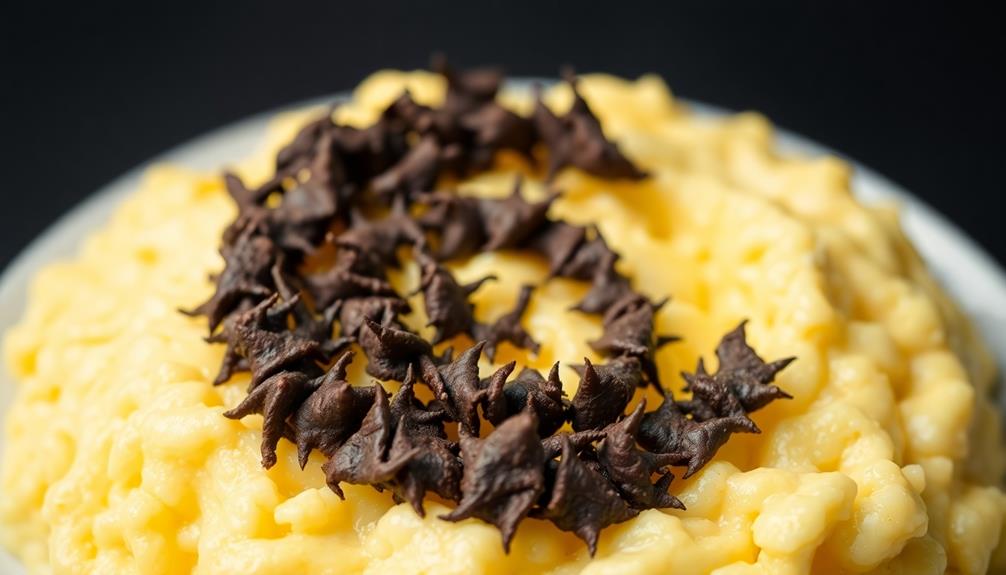
One of the easiest ways to enjoy the captivating aroma and flavor of truffles is by adding shavings to your dishes. Use a truffle shaver or a very sharp knife to create thin, delicate slices of the precious fungus.
Gently place the truffle shavings on top of your dish, whether it's a simple pasta, a risotto, or a protein like steak or chicken. The heat from the dish will release the truffle's earthy, musky scent, tantalizing your senses.
Be sure to add the truffles at the last minute to preserve their flavor and texture. A little goes a long way, so start with a small amount and gradually increase it to suit your taste.
The key is to let the natural beauty and taste of the truffles shine through, complementing rather than overpowering the other ingredients. With a few whispers of truffle, you can transform an ordinary meal into an extraordinary culinary experience.
Step 5. Serve Immediately With Fresh Bread
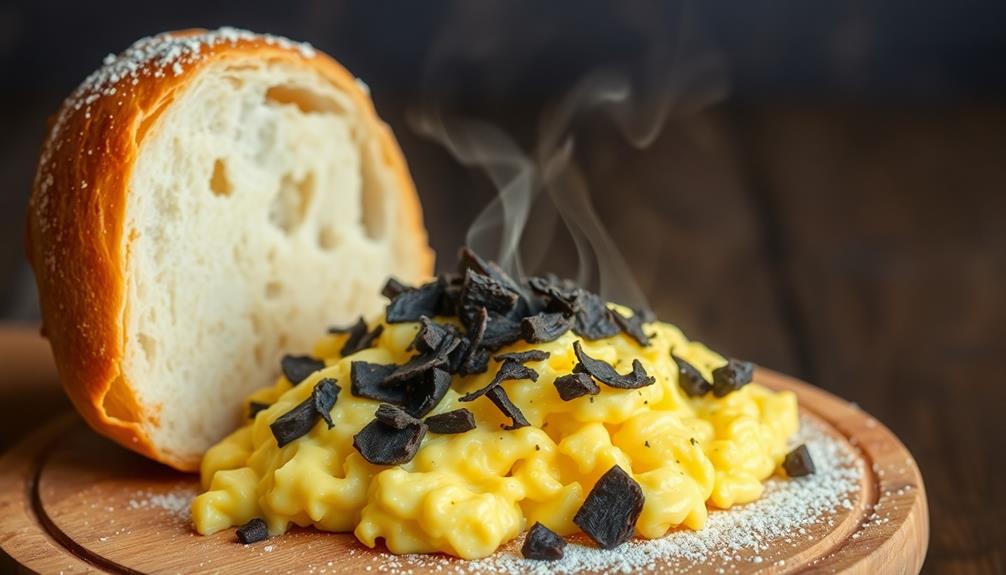
Serve the truffle-infused dish immediately, accompanied by a crusty, freshly-baked loaf of bread. The warmth of the bread will perfectly complement the earthy aroma and flavor of the truffles.
Tear off a piece of the bread, and use it to scoop up every last morsel of the dish, ensuring you don't miss a single bite. The combination of the soft, pillowy bread and the luxurious truffles will dance on your palate, creating a harmonious symphony of textures and flavors.
Don't let the dish sit for too long – the truffles are at their peak when served hot. The intense, pungent scent will fill the air, tantalizing your senses and whetting your appetite.
Savor each mouthful, allowing the truffle's complex notes to linger on your tongue. The freshly-baked bread will soak up any remaining juices or sauces, creating a delightful, satisfying finale to your truffle experience.
Final Thoughts
Truffles are undoubtedly a remarkable delicacy, captivating the culinary world with their earthy allure and unique flavors. As you've learned, hunting for these elusive fungi requires patience, skill, and a well-trained companion. The joy of unearthing a prized truffle is only matched by the delight of incorporating it into your culinary creations.
While their scarcity and price tag may deter some, those who've experienced the depth of flavor truffles bring to a dish understand their true value. Whether shaved atop a simple pasta, infused in a velvety soup, or layered between buttery pastry, these "black diamonds" elevate any meal to new heights.
As you continue on your truffle journey, remember to savor each bite, appreciating the culmination of nature's gifts and the dedication of those who work tirelessly to bring this remarkable ingredient to your table. Truffles aren't merely a luxury – they're a testament to the wonders of the natural world. Take the time to truly immerse yourself in the earthy, umami flavor of truffles, and marvel at the way they effortlessly elevate any dish. Just like the intoxicating aroma of roasted chestnuts on a winter’s day, truffles have a way of conjuring up feelings of comfort and indulgence. So, whether you’re enjoying them shaved over a simple bowl of pasta or incorporated into a lavish tasting menu, remember to honor the truffle’s journey from the forest to your plate, and savor every exquisite moment.
Frequently Asked Questions
How Can I Cultivate Truffles in My Backyard?
To cultivate truffles in your backyard, you'll need to inoculate oak or hazelnut trees with truffle spores. It's a long process, but with the right soil, climate, and patience, you can grow your own black gold.
What Is the Difference Between Black and White Truffles?
Black and white truffles differ in their color, flavor, and growing conditions. White truffles have a more delicate, earthy taste, while black truffles offer a more intense, nutty aroma. Their appearance and regions of cultivation also vary significantly.
How Long Do Truffles Last After Harvesting?
After harvesting, truffles have a short shelf life. You'll generally get about a week or two of freshness before they start to lose their aroma and flavor. Proper storage is key to maximizing their delicious potential.
Can I Substitute Truffles With Other Mushrooms in Recipes?
You can substitute truffles with other mushrooms in recipes, but the flavor profile won't be the same. While they may work in some dishes, they won't replicate the unique aroma and taste of genuine truffles.
Where Can I Find the Best Truffles for Purchase?
You can find the best truffles for purchase at specialty food stores, gourmet markets, or online retailers that specialize in high-quality, fresh truffles. Make sure to research reputable vendors to ensure you're getting authentic and flavorful truffles.

